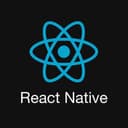Exploring the World of React Native: A Front-End Engineer's Journey
Exploring the World of React Native: A Front-End Engineer's Journey
As a seasoned front-end engineer accustomed to the world of web development, diving into mobile app development with React Native was a thrilling yet challenging adventure. This technology, backed by Facebook, promised a bridge between the web and mobile realms, allowing developers to leverage their React skills for cross-platform mobile applications.
The Excitement of Cross-Platform Development
React Native promised a dream scenario — the ability to write code once and deploy it on both iOS and Android platforms. This not only reduces development time but also streamlines maintenance and updates. For a front-end engineer, the idea of reusing components and logic across platforms was nothing short of revolutionary.
The Familiarity of React
One of the key attractions of React Native for a front-end engineer is the familiarity with React's component-based architecture. Transferring knowledge from web development to mobile was seamless, making the transition smoother and accelerating the learning curve.
Navigating the Ecosystem
React Native comes with a vast ecosystem of libraries, modules, and tools. While this richness provides flexibility and extensibility, it also means navigating through numerous options. Integrating native modules or dealing with platform-specific nuances became part of the learning process.
Styling and UI Challenges
Styling in React Native uses a different approach compared to traditional web CSS. While Flexbox is familiar, handling layouts and styles for various screen sizes and resolutions required a shift in mindset. Achieving pixel-perfect designs demanded a deeper understanding of mobile UI principles.
Bridging the Gap with Native Modules
Despite React Native's capabilities, there were moments when native functionality was necessary. Understanding how to bridge between React Native and native modules became a valuable skill. This involved delving into platform-specific code and leveraging native capabilities when needed.
Debugging and Performance Optimization
Debugging React Native applications involves a combination of tools like React DevTools and platform-specific debugging tools. Performance optimization, especially for animations and transitions, required careful consideration of the differences between web and mobile environments.
Embracing the Community
The React Native community played a crucial role in the journey. From troubleshooting common issues to sharing best practices, being part of an active and vibrant community proved invaluable. Contributing to open-source projects and seeking help through forums became a routine part of the development process.
The Evolution of React Native
React Native is a dynamic technology, with frequent updates and improvements. Staying abreast of the latest releases, understanding the implications of updates, and adapting to new features became essential. The commitment to keeping skills up-to-date became an integral part of the React Native experience.
Conclusion: A Multifaceted Skill Set
The journey of a front-end engineer with React Native is multifaceted. It involves not only mastering the React Native framework but also embracing mobile development principles and understanding the intricacies of different platforms. While challenges exist, the rewards of building powerful, cross-platform applications with a single codebase make the journey worthwhile.In conclusion, the experience of a front-end engineer transitioning to React Native is marked by excitement, challenges, and continuous learning. As technology evolves, so does the role of a front-end engineer, now extending beyond the confines of the web to shape the mobile experiences of tomorrow.
